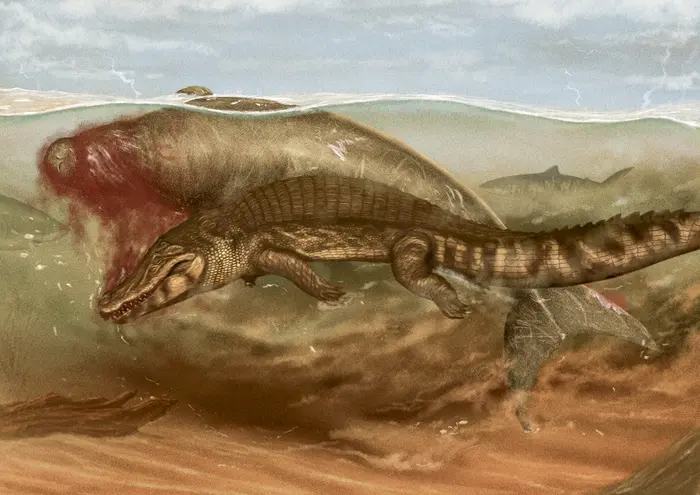Ancient Sea Cow Fossil Shows Rare Evidence of an Attack by Multiple Predators
Posted on Categories Discover Magazine

Aquatic animals delivered a one-two predatory punch millions of years ago. A combination of different teeth marks on “sea cow” bones show that a crocodile snatched the creature’s skull and drowned it with a “death roll”— essentially rotating underwater while grasping the sea cow in its jaws. When the croc was done dining, sharks showed up to finish the leftovers. The study, in the Journal of Vertebrate Paleontology, provides a rare example of a creature being attacked by two different predators during the Early to Middle Miocene epoch (23 million to 11.6 million years ago).
Fossils Reveal Predatory Behavior in Crocodiles
This example is significant because it draws a clear link to similar predatory behavior that still exists. And it is rare because an initial attack, followed by secondary scavenging, rarely leaves much evidence. “Examples of multiple predation, in general, are hard to find because most scavengers tear animals to shreds,” says Aldo Benites Palomino, the lead author of the study, who performed the work as part of his Ph.D. research at the University of Zurich.
The fossils clearly show two vastly different kinds of bite marks on the bones. “The crocodilian bite marks are really round,” says Palomino. “The shark bites are narrower and triangular. They are really easy to tell apart.”
Read More: What Are Fossils and Where Are They Found the Most?
How Researchers Analyzed the Sea Cow Fossils
Finding this fossil was particularly fortuitous. Palomino initially focused his graduate school research on how sharks feasted on ancient sperm whales. “When this fossil was found, it took a detour,” Palomino says of his Ph.D. work.
Co-author Marcelo R. Sanchez-Villagra, a professor of paleobiology at the University of Zurich, described a series of events that led to the discovery. “We first learned about the site through word of mouth from a local farmer who had noticed some unusual rocks,” Sanchez-Villagra said in a statement. “Intrigued, we decided to investigate. Initially, we were unfamiliar with the site’s geology, and the first fossils we unearthed were parts of skulls. It took us some time to determine what they were — sea cow skulls, which are quite peculiar in appearance.”
Removing the fossils took a high level of care, in part because of the kind of sediment in which the bones were buried. A team of five encased the bones in a special compound. They needed about seven hours to remove the bones. Then, a team spent several months reconstructing them. Once they were pieced together, Palomino could perform his analysis.
Read More: 6 Ancient Mega-Predators that Once Ruled the World
New Aquatic Fossil Frontier
Palomino also says the study is significant because few fossils have been found in this area so far. It was probably a “paradise” for crocodiles and other large aquatic predators because the land where the fossil was found was probably part of the Caribbean Sea millions of years ago, which was teeming with life — and, therefore, prey.
Paleontologists are only now beginning to explore this area. Further work will help understand exactly what species of croc killed the sea cow. Palomino expects a surge of excavations in the area. “We are really starting to get some interesting fossils from there,” Palomino says.
Read More: Why Were Prehistoric Marine Reptiles So Huge?
Article Sources
Our writers at Discovermagazine.com use peer-reviewed studies and high-quality sources for our articles, and our editors review for scientific accuracy and editorial standards. Review the sources used below for this article: